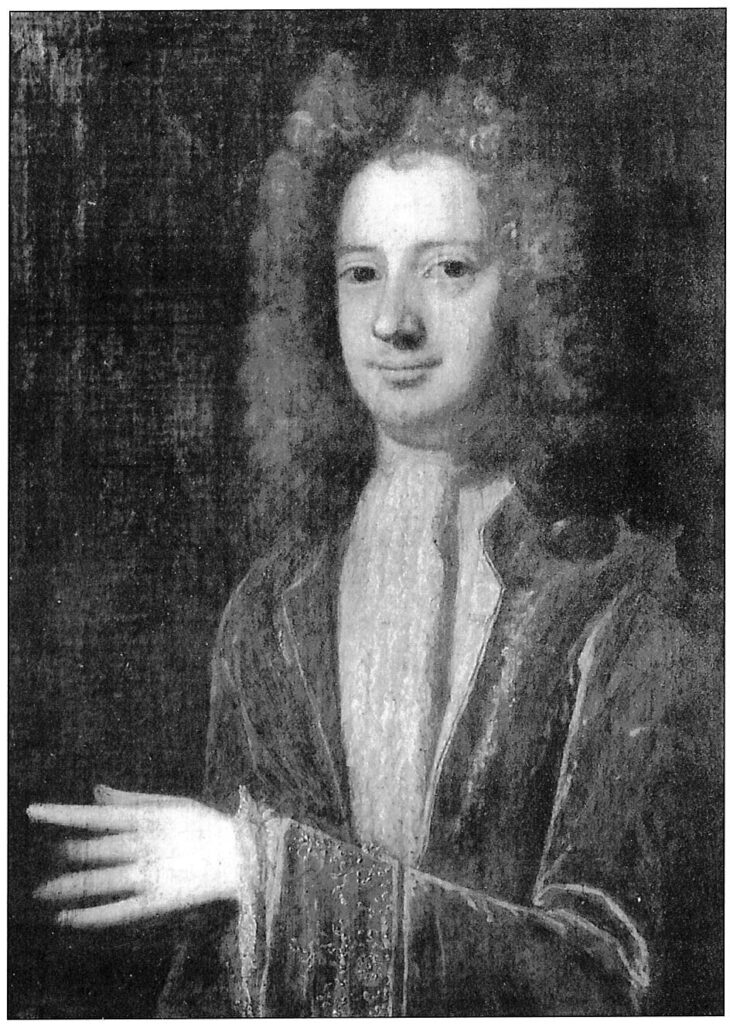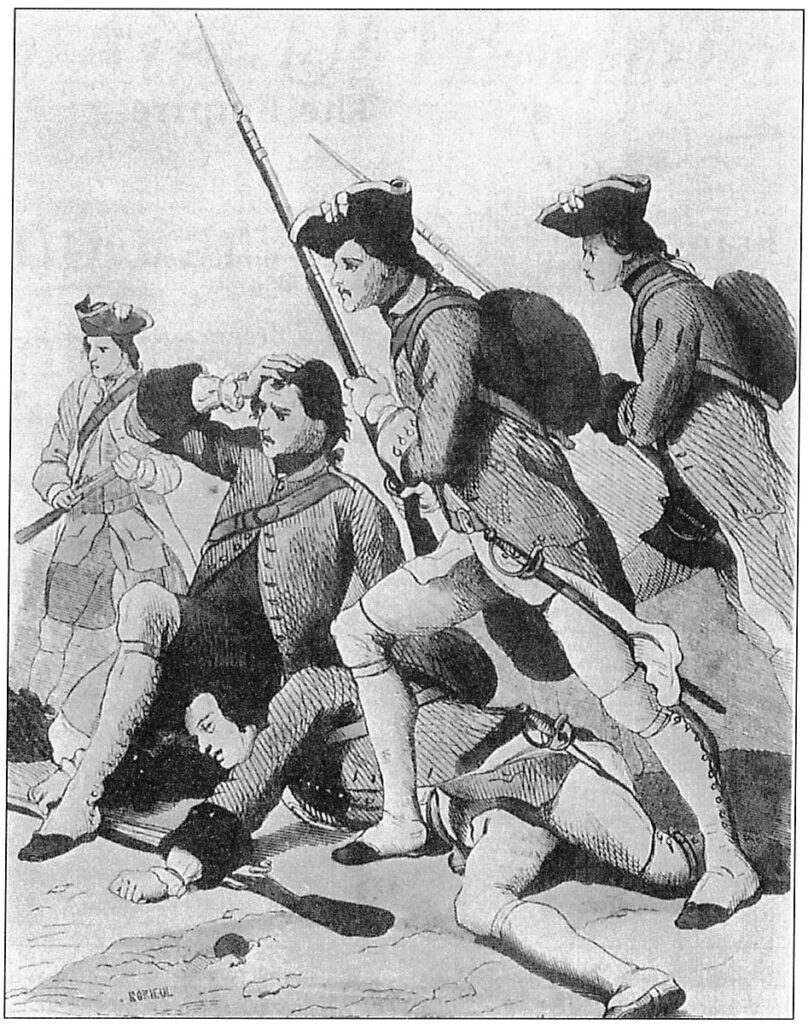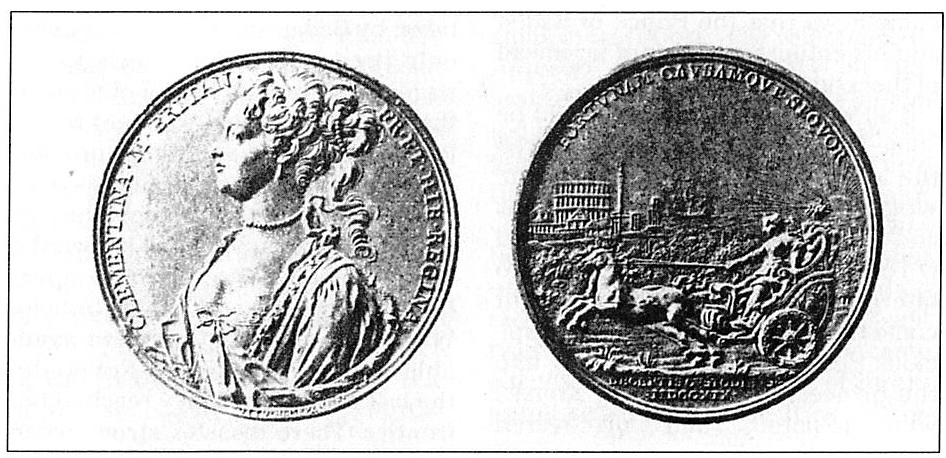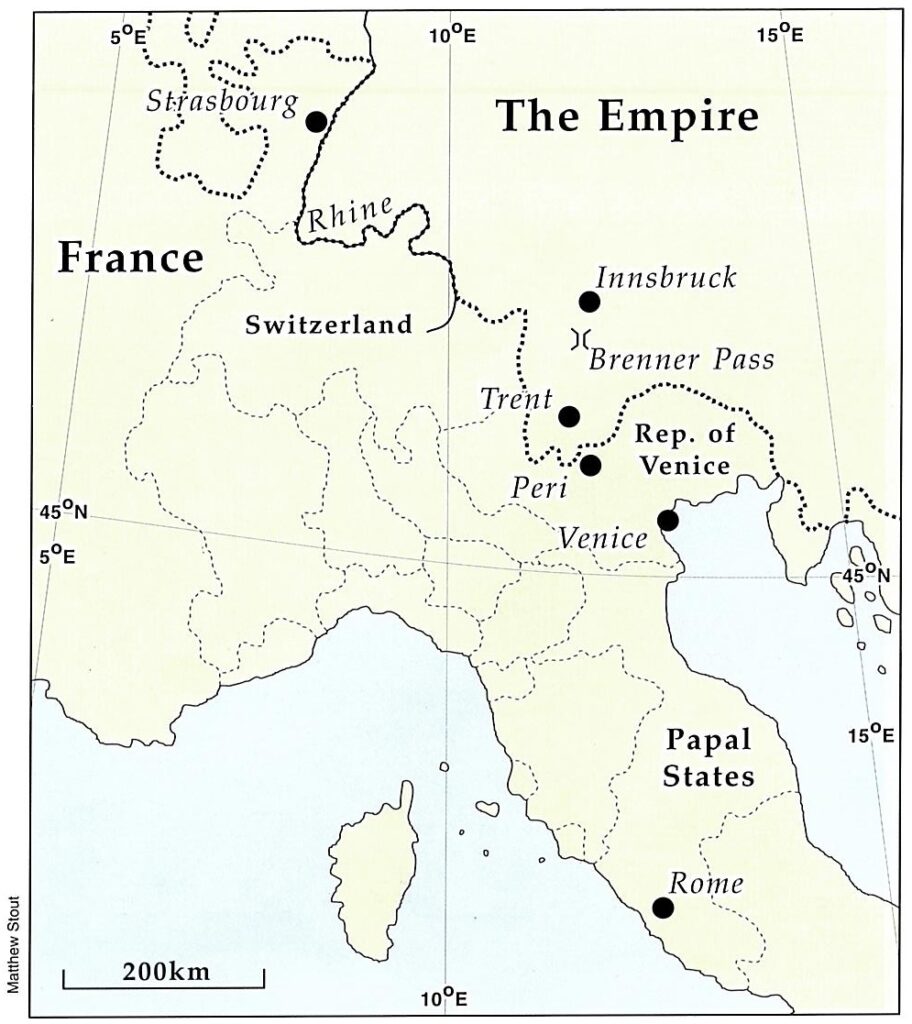
On a cold April morning in 1719 a carriage containing an Irish lady and her maid, escorted by her husband and four companions, left the fortress city of Strasbourg to cross the Rhine. As they departed the governor of the city spoke to them, ‘Adieu mes enfants, you are not crossing the Rhine for nothing, and you seem to be engaging in an attempt to make a hole in the moon. May God guide you, for I know you are men who will conquer or die’.
For it was an open secret among the garrison that the party of Irish exiles were engaged to rescue Princess CIementina Sobieski from imprisonment by the Holy Roman Emperor and to take her to Rome to marry Prince James Stuart.
Pretenders
The expedition leader was Charles Wogan, of Rathcoffey in County Kildare. Born in 1689, Wogan had taken part in the Jacobite rising in the north of England in 1715 as aide de camp to the rebel general, Forster. After their surrender, Wogan and other prominent Jacobites were imprisoned at Newgate in London. In May of the following year, the very day before his trial, Wogan escaped with a £500 price on his head. He eventually made his way to France where he joined Dillon’s regiment of the Irish Brigade before going to Rome to the court of James III, son of the deposed James II, also known as the Old Pretender. Wogan soon found employment with James travelling to many of the courts of Europe on secret missions for his royal master. His most important mission was to find a suitable bride for James. In November 1717 he went in disguise to Germany visiting those courts which had eligible princesses. At Ohlau, he found Clementina, daughter of another prince in exile, James Sobieski, pretender to the throne of Poland. The choice was acceptable to James and negotiations were opened to arrange the marriage, which after some hitches was agreed upon by the following summer. It was essential for James to have a wife and provide an heir to the Stuart claim to the thrones of Britain and Ireland. It was equally essential for George I and the Hanoverian succession to prevent this, especially when the proposed wife, Clementina, was related to the important royal families of Europe. The British government put pressure on Charles VI, the emperor, to prevent the marriage. Eager to appease the British, he had Clementina, who was his cousin, arrested and imprisoned with her mother at Innsbruck. At the same time, George I offered a bribe of £ 100,000 to an alternative groom, the Prince of Baden, to marry her. Clementina, bound by her promise to marry James, refused him.
Escape plan
James however was not so steadfast and was on the point of abandoning the idea of marriage to Clementina in favour of a more convenient bride when Wogan offered to rescue the Polish princess and bring her to Rome. After some hesitation James agreed. Using a false passport supplied by Pope Clement XI, Wogan — now the ‘Count de Cernes’ — went first to Ohlau to get the permission of Clementina’s father for the dangerous venture and then to France to recruit help from among the Irish Brigade. He found his’ recruits among the regiment of his cousin, Colonel Dillon. These were Major Richard Gaydon, his uncle; Captain Lucius O’Toole; Captain John Misset, his wife and her maid. Added to their number was James’s Italian valet Vezzozi, as evidence of his master’~ commitment to the venture. On crossing the Rhine, as they had entered imperial territory, Wogan and his companions fired off their pistols to signify a declaration of war on the emperor. Charles VI was unaware of this secret enemy which had infiltrated his realm but he was soon to find out. The party journeyed through snow to the town of Nazareth, about one day’s journey from Innsbruck where Clementina her mother and the Jacobite agent Si; James Hay were imprisoned. They reached Nazareth on 21 April. Soon after Misset, disguised as a Flemish merchant, went to Innsbruck and gained access to the house where Clementina was prisoner. He brought with him a letter from Wogan which contained the escape-plan. On delivering this and receiving Clementina’s assurance that she would carry out Wogan’s plan, Misset went on to the Brenner Pass to make arrangements for the escapees to cross into Italy.
Cooked chickens
Wogan had set 27 April as the day for the escape and went ahead making preparations for this date. He even bought and cooked some chickens for the journey — doing the cooking himself so as to keep his intentions secret from the innkeeper. The earlier unforeseen arrival at Innsbruck of the Prince of Baden threatened the success of the escape plan as he was an ardent suitor (for the £100,000 at least!) and called on the princess every day. He would be quick to raise the alarm if he suspected something. A message was sent to Wogan to delay until the troublesome prince could be got rid of. It was not until the 27th itself that Baden finally got the message that Clemen tina was not interested in him and left. The escape could now proceed.
Wogan’s plan was simple. Clementina would retire to her bedroom feigning illness and refuse to see all visitors, especially her gaoler, General Hester. That night Wogan would sneak Madame Missel’s maid Jeanetton, inside and the two wome~ would swap clothes enabling the princess to leave the house in the guise of the maid. She would then travel with Wogan and his companions to Rome. On the 28th Clementina retired to her room and the rescue party moved to an inn, the Black Eagle, on the outskirts of Innsbruck. By this time a terrible storm had blown up, one of the last of winter, and it looked as if the escape would have to be called off. Although her mother forbade the attempt in such appalling weather, Clementina was determined to go through with it. Wogan too had decided to go ahead as planned, come what may. He had already risked enough staying so long in imperial territory and so he was much relieved to receive word that the princess was as determined as himself.
High heels
One flaw in Wogan’s plan was that he had not informed Jeanetton of her part. On the afternoon of the 28th when Wogan told her that she would have to remain in the house in Innsbruck while O’Toole escaped with his fiancée — it was thought safer to tell her that the escape was for OToole’s benefit so that he could marry a lady despite her parents’ wishes — she agreed until told that the lady in question was,quite small and that therefore Jeanetton would have to wear flat shoes. Jeanetton was a tall woman and proud of her height, which she even exaggerated by wearing high heels. At this pOint she refused outright. It looked as though the fate of the Stuart succession was to be blighted for the sake of high heels, and it took a great deal of pleading by O’Toole before she would agree. By half past eleven when Wogan and Jeanetton set out to meet Clementina’s servant, Konska, a blizzard was blowing, and it was with difficulty that he took them through the town to the house. Wogan waited at a nearby corner, sword at the ready, while Konska took the maid off. Minutes passed and there was no sign of the princess coming from the house. Wogan waited and waited but still there was no sign of her. Just as he was deciding whether to give up or to get into the house, two figures emerged through the snow, Clementina and Konska. She had left behind letters to her mother and General Hester accepting full responsibility for the escape and carried with her a bundle containing the Stuart family jewels which had been sent to her previously as part of the marriage arrangements. The trio arrived wet and muddy at the Black Eagle. Clementina was in a particularly bad state as she had fallen into a stream on the way. Time was of the essence. As soon as the flustered princess was in dry clothes, they woke their drivers, got the coach ready and took off on the road to the Brenner Pass. They were well on the road and the sun was already up when Clementina realised that she had left the packet of jewels back at the inn. If they were discovered, the game was up. O’Toole was ordered to ride back as fast as he could to retrieve them and to join the party at the pass.
The snow prevented them from going very fast and the drivers had to be promised plenty of ‘drinkgeld’ to continue at all. There was relief at any rate when O’Toole returned with the jewels and they proceeded with great difficulty to ascend the pass. At the inn on the summit they met with Misset. While they were changing horses, Clementina fainted and had to be treated by Madame Misset before they could continue. However they soon renewed their journey.
Reckless driving
Their first real difficulty once they got past the snow line was the chickens which Wogan had prepared.These proved to be almost inedible which was not surprising as they had been cooked three or four days before and were only eaten because there was nothing else. These chickens probably account for the bouts of sickness felt during the journey. A more serious danger occurred on the descent along the valley of the River Adige when they met a cart coming in the other direction. The road was very narrow and there was little room to pass. In speeding past the cart, their carriage almost went over the precipice which dropped down to the bottom of the deep valley. Only an old tree trunk sticking out from below the edge of the road saved them. O’Toole, who was riding behind, came alongside and beat the drivers with his whip for their carelessness. When they stopped later to change horses at Brixen, O’Toole’s face still showed such a look of horror at the close shave that Wogan took him aside so as not to alarm the women. At Brixen they got the unwelcome news that the Prince of Baden and his entourage were not far ahead of them on the same road.
If all was going to plan, it would be some time before Hester discovered the escape and raised the alarm. Wogan decided to take no chances and near Trent he asked Misset and O’Toole to remain at a staging post to intercept any messenger that might come that way. That morning a suspicious Hester had forced his way into the princess’s room, killing Konska who resisted, and discovered Jeanetton in her place. Immediately he sent couriers along all the likely escape routes to alert the authorities. One of these did come along the road with a dispatch for the Prince of Taxis, governor of Trentino. Misset and O’Toole disposed of this courier by inviting him to join their table and then drinking him under it. When the courier eventually collapsed under the influence of wine and brandy, they relieved him of his dispatch.
Broken axle
Meanwhile Wogan and the others were making slow progress as all the available horses had already been taken by Baden and his party, leaving only tired horses for Wogan’s carriage. They were so fearful of pursuit, that in Trent Vezzozi was sent to the Prince of Taxis to ask him to procure horses for the Count of Cernes’ carriage. As it was the prince’s duty to arrest them, if only he had known the facts, this was a daring move. However even he was unable to help. With what animals that were available, they proceeded to Roveredo, the last town before they reached the frontier. There disaster struck when the axle of the carriage broke. A makeshift repair also broke and the carriage had to be abandoned.
They proceeded on foot, even the princess, as far as Ala where they got a small cart which only had room for the two women. Leaving Vezzozi to see to the repair of the carriage, they moved on with Wogan and Gaydon walking. ‘In this grotesque fashion’, wrote Wogan later, ‘the grand-daughter of the king of Poland, cousin of the emperor and of the queen of Spain arrived in Peri’ (the first village over the border from Austrian territory). Here the entire party were reunited and without any further mishaps travelled to Rome. They made a triumphal entry into the city welcomed by the pope. A short time later the wedding between the Polish princess and the Jacobite prince took place.
Reward
Wogan and his fellows were rewarded by both James and the pope. At first only Wogan was to receive high reward but he refused to accept any honour which the others did not receive. So it was that he became a Senator of Rome — an honour which could not be bought and which he shared with certain kings – and was created a baronet and commissioned as a colonel by James. The escape soon became the talk of Europe and Wogan became famous as a result. No less than five accounts . of the episode were published. While his companions returned to their regiment, each now with a higher rank, Wogan went to Spain where he had a distinguished career rising to become governor of La Mancha, home of that other great romantic, Don Quixote. In later life he became a writer and exchanged letters with Dean Swift. He died in La Mancha in 1752.
Tony Canavan is editor of the cultural traditions magazine, Causeway.
Further reading:
Dictionary of national biography (London 1900).
J.M. Flood, The life of the chevalier Charles Wogan (Dublin 1922).
J.C. O’Callaghan, History of the Irish Brigades in the service of France, (Glasgow 1870).
J.T. Gilbert (ed.), Narratives of the detention, liberation and marriage of Maria Clementina Stuart (Dublin 1894).




